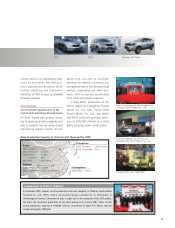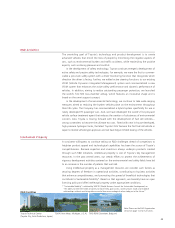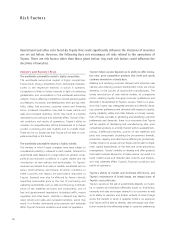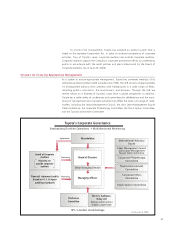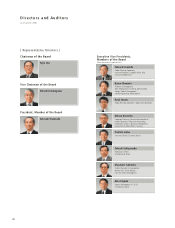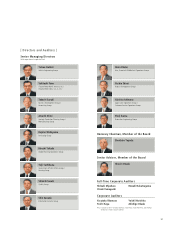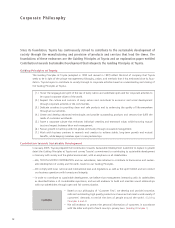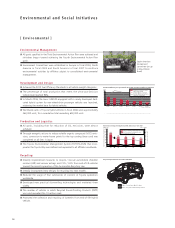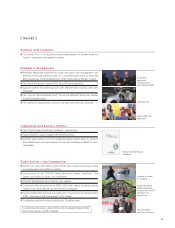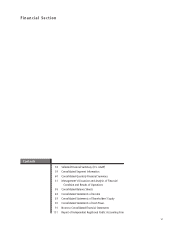Toyota 2006 Annual Report Download - page 50
Download and view the complete annual report
Please find page 50 of the 2006 Toyota annual report below. You can navigate through the pages in the report by either clicking on the pages listed below, or by using the keyword search tool below to find specific information within the annual report.
48
Accountability
Toyota considers the appropriate disclosure of corporate and financial information as a crit-
ical responsibility in corporate governance, and the Company works to enhance its
accountability to shareholders and other investors.
With respect to financial information, in addition to quarterly reporting of financial
statements, we made financial statements timelier, more transparent, and more compre-
hensive by only issuing consolidated financial statements in accordance with U.S. GAAP
from fiscal 2004. Further, in fiscal 2006 the Company started to disclose an outlook for con-
solidated business results in fiscal 2007. In response to the enactment of the U.S. Sarbanes-
Oxley Act, Toyota has established the Disclosure Committee. The committee works to
ensure the appropriate, timely, and fair disclosure of material information.
Compliance
To firmly establish corporate ethics and ensure strict compliance, Toyota’s Corporate Ethics
Committee, which is comprised of members drawn from the executive vice president level
and above and representative corporate auditors, deliberates issues and measures relating
to corporate ethics, compliance, and risk management.
For employees, an outside attorney provides the Compliance Hotline. Also, we are
reexamining the compliance risks within each division, implementing countermeasures, and
entrenching them. Toyota will implement the tenets of ethical business practice by further
promoting the “Guiding Principles at Toyota” and the “Toyota Code of Conduct” and by
educating and training employees at all levels and in all areas of operations.
With regard to internal audits, a specialized independent organization is working
on establishing a solid system to verify the effectiveness of internal controls over financial
reporting. In order to enhance the reliability of the financial reporting of the Company, the
three auditing functions, namely, independent accountants, corporate auditors, and inter-
nal auditors, have meetings periodically and as necessary to share information through dis-
cussion on audit plans and results that aids conducting an effective and efficient audit.
Corporate Social Responsibility
To maintain stable, long-term growth in international society, companies have to earn the
respect and trust of society and individuals. Rather than simply contributing to economic
development through operational activities, growing in harmony with society is a must for
good corporate citizens. Mindful of the foregoing, Toyota has a range of committees that
are tasked with monitoring corporate activities and management in relation to social
responsibilities, including the Corporate Philanthropy Committee and the Toyota
Environment Committee.
Internal Control Systems and Toyota’s Basic Approach
Based on the “Guiding Principles at Toyota” and the “Toyota Code of Conduct,” we,
together with our subsidiaries, have created and maintained a sound corporate culture.
In our actual operations, based on the “Toyota Way” principles, we integrate into our
business operation processes the principles of problems identification (“Mondai Hakken”)
and continuous improvements (“Kaizen”) and make continuous efforts to train our
employees who put these principles into practice.
With the above understanding, internal control has been developed under the
following basic policies.



